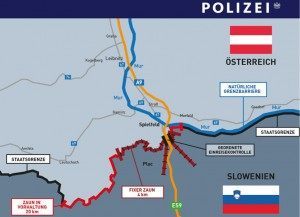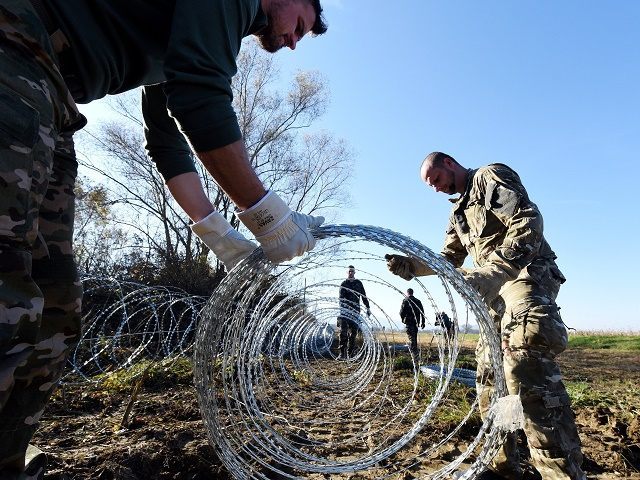Austria is to build a 2.3 mile border ‘barrier’ on the 205 mile border with Slovenia in a non-attempt to control the flow of migrants into the country.
The plan is a watered down version of an already significantly reduced border fence proposed for the area around the busy crossing at Spielfeld. Designated a ‘G7’ fence by Interior Minister Johanna Mikl-Leitner, the 7-foot mesh construction will not be equipped with barbed wire and isn’t intended to stop the flow of migrants.
Instead, the fence is intended to funnel migrants into the reception centre at Spielfeld so they can be registered as asylum seekers as they move into the European Union. Ms. Mikl-Leitner told press the fence was “Schengen compliant” and consequently fully in line with European Union laws on freedom of movement — meaning the border would remain entirely porous.
The Austrian government is still avoiding using the politically charged word ‘fence’, preferring to call erection a ‘barrier’, and wants to have it finished by the end of the year — in little over six weeks time.

Police handout map showing the new fence in maroon, with the potential extension in lighter red. Click for full size / Polizei (Österreich)
The plan stands in strong contrast to the border fence built along the Hungarian border with Croatia and Serbia, which cut daily migrant incursions from 10,000 to less than 30 in just a week. Rolled out in stages, the Hungarian fence is almost twice as high as the Austrian project, 300 miles long, and is constructed of high-security mesh combined with stacked razor wire.
Austria police maps of the new 2.3 mile fence show the area where it will be deployed along the Spielfeld crossing, and the potential reach of the proposed extension, which could see it grow to 15 miles. The plans for the fence means extra materials will be held in locked storage near the border, meaning barbed wire could be deployed within 48 hours in case of an emergency, reports Austrian daily Kronen Zeitung.
The Spielfeld crossing is one of two major motorways that links Slovenia to Austria, and the experience of other nations in Europe suggests adding controls at this crossing without attempting to close the other will merely re-route the migratory flow. As the police map shows, the fence also doesn’t go as far as the natural boundary between Austria and Slovenia, the Mur river.
This gap could allow migrants to simply walk through the half-mile gap between the end of the construction and the river banks as they continue on their way north.
Almost the whole of Austrian politics is up in arms over the fence. To the hard-left, pro-migrant Green party it is a “right wing symbol of populist politics”, while the leader of the Freedom Party of Austria has called it a “farce”.
The experience of Sweden this week, who also attempted to introduce border controls to bring some order over the influx of refugees has shown the effectiveness of Schengen-compliant border control. With tens of thousands of people crossing the Swedish-Danish border daily and only a few hundred officers available to supervise, border checks were reduced to ‘spot checks’, with cars and trains picked at random to be inspected.
This limited effectiveness was further hampered by orders from Stockholm that passport checks be not targeted by ‘discrimination’, and that officers not chose based on ethnicity, language spoken, or skin colour.
Over the first day of inspections, Sweden recorded no significant reduction of migrants on the same time period in the previous week, and only managed to turn back 30 individuals — who went away voluntarily. Efforts were further hampered by Sweden’s slavish dedication to EU asylum rules, which meant police were still obliged to allow migrants even without passports to cross the border if they claimed to be refugees.
Follow Oliver Lane on Twitter: Follow @Oliver_Lane or e-mail to: olane@breitbart.com

COMMENTS
Please let us know if you're having issues with commenting.